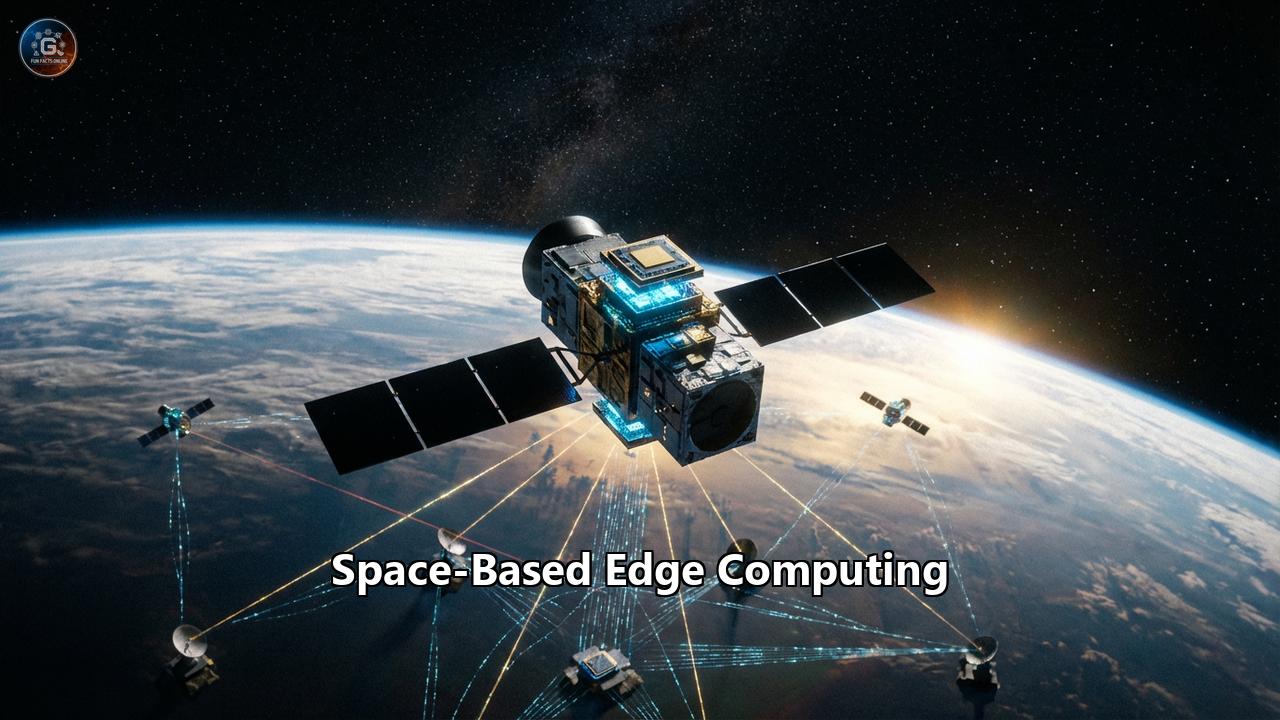Here is a comprehensive, deep-dive article on Space-Based Edge Computing.
The Orbital Brain: How Space-Based Edge Computing is Rewiring Our WorldThe next great leap in computing isn't happening in a server farm in Northern Virginia or a silicon foundry in Taiwan. It is happening 400 kilometers above our heads, moving at 17,500 miles per hour. We are witnessing the birth of
Space-Based Edge Computing—a technological paradigm shift that promises to transform satellites from passive mirrors reflecting data back to Earth into intelligent, autonomous brains capable of thinking in a vacuum.For decades, space exploration and satellite operations followed a rigid, centralized model: gather data in orbit, transmit raw files to ground stations, and process them on Earth. This "bent-pipe" architecture worked when satellites were simple repeaters. But in an era where Earth Observation (EO) constellations generate petabytes of high-resolution imagery daily, this model is broken. It is too slow, too expensive, and too vulnerable.
Space-Based Edge Computing is the solution. By placing high-performance servers, AI accelerators, and cloud architectures directly into orbit, we are decoupling space operations from the tether of ground control. This is the story of how humanity is building a nervous system for the planet, moving the cloud to the ultimate edge.
Part 1: The Data Bottleneck and the Speed of LightTo understand why we need computing in space, we must first understand the "downlink bottleneck."
Modern satellites are voracious data creators. A single hyperspectral satellite can generate terabytes of data every day. In the traditional model, all this data must be downloaded to Earth via Radio Frequency (RF) signals to ground stations. This process is fraught with inefficiencies:
Putting a server in space is not as simple as launching a rack of Dell blades. The space environment is hostile to electronics. The engineering challenges are immense, leading to a new breed of hardware and software innovation.
1. The Hardware: Radiation vs. PerformanceTerrestrial computers rely on delicate transistors that can be easily flipped by high-energy particles (cosmic rays). In space, a "Single Event Upset" (SEU) can crash a system or corrupt data.
The software architecture of satellites is shifting from bespoke, monolithic code to flexible, containerized microservices.
Edge computing is powered by the "Internet of Space." Constellations like
Starlink and the Space Development Agency’s Transport Layer use Optical Inter-Satellite Links (OISL). These are lasers that allow satellites to talk to each other in a mesh network in space, bypassing the ground entirely. An edge computer on one satellite can process data and shoot the result via laser to another satellite that is currently over a ground station, creating a real-time data pipeline. Part 3: The Titans of Orbital ComputingThe race to own the "Orbital Edge" is attracting the world's biggest technology companies and agile startups.
The HyperscalersPart 4: Use Cases Transforming Our World
The theoretical benefits of Space-Based Edge Computing are now becoming operational realities across distinct sectors.
1. Environmental Protection & Climate Change
- Wildfire Detection: Startups like OroraTech are using thermal cameras with edge AI. Instead of waiting for a full download, the satellite detects the thermal spike of a new fire and alerts local fire departments within minutes.
- Methane Monitoring: Methane is an invisible super-pollutant. Edge-enabled satellites can scan pipelines and processing plants, using AI to identify the spectral signature of a leak and automatically flagging it to operators before millions of dollars of gas escape.
2. Defense and Intelligence (ISR)
- Hypersonic Tracking: Hypersonic missiles move too fast for traditional "track-transmit-process" loops. The US Space Development Agency (SDA) is building a mesh network of satellites that can track these threats autonomously in orbit, passing custody of the target from satellite to satellite using laser links and onboard processing.
- Autonomous De-confliction: As space becomes crowded, edge computing allows satellites to monitor their own surroundings and automatically maneuver to avoid collisions with space debris, without waiting for a human pilot on Earth to notice the danger.
3. The Space Economy
- In-Space Manufacturing: Factories in space (like those planned by Varda Space Industries) require precise, real-time control of crystallization and printing processes. The latency of controlling these machines from Earth is unacceptable. Local edge controllers ensure the quality of pharmaceuticals and fiber optics manufactured in microgravity.
Part 5: The Future – Orbital Data Centers and Sustainability
Perhaps the most visionary aspect of this technology is the concept of the Orbital Data Center.
Data centers on Earth are energy hogs. They consume vast amounts of electricity and water for cooling. In space, the sun provides infinite, 24/7 solar energy (no clouds, no night in certain orbits). While the vacuum makes convection cooling impossible, radiative cooling is highly efficient if designed correctly.
Visionaries propose lifting the world's data archival and heavy processing loads off the planet. Imagine "server haven" satellites that house the world's backup data, powered entirely by the sun, cooling into the infinite sink of deep space, and accessible from anywhere on Earth via laser link. This "Green Space Cloud" could significantly reduce the carbon footprint of the digital age.
Conclusion: The Intelligent Frontier
Space-Based Edge Computing is more than a technical upgrade; it is the maturation of the Space Age. We are moving from the era of
exploration—where we went to space to look around—to the era of utilization*—where space becomes an active extension of our economic and digital infrastructure.By imbuing satellites with the power to think, we are creating a planetary nervous system that is faster, smarter, and more resilient than anything that has come before. As launch costs plummet thanks to reusable rockets, and chip power increases thanks to edge computing, the line between Earth and Space is blurring. The cloud is no longer just in the sky; it is above the atmosphere, watching over us, processing our future in real-time.
Reference:
- https://www.analysysmason.com/research/content/articles/edge-computing-in-space-necessity-or-luxury/
- https://stlpartners.com/articles/edge-computing/space-edge-computing/
- https://issnationallab.org/press-releases/release-ng20-hpe-spaceborne-computer2/
- https://www.racksolutions.com/news/data-centers-news/are-data-centers-headed-to-space/
- https://www.edgeir.com/microsoft-takes-the-edge-into-space-with-azure-orbital-20201124
- https://cdn.fedscoop.com/how-azure-orbital-and-cloud-expand-worldview-report.pdf
- https://techhq.com/news/azure-space-why-microsoft-is-taking-its-cloud-into-orbit/
- https://www.emergenresearch.com/industry-report/space-based-edge-computing-market

